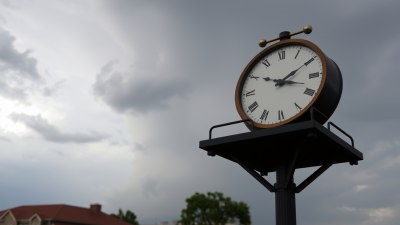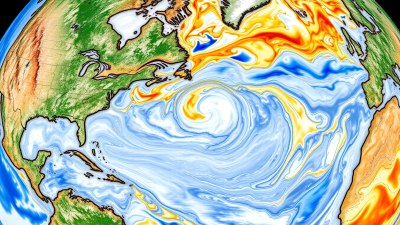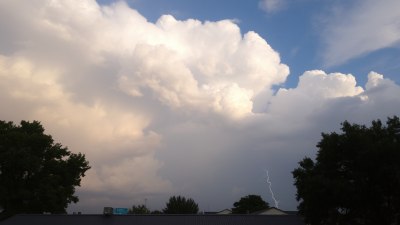Why We Can’t Always Predict Tornadoes and What We’re Doing About It
Explore the challenges of tornado prediction and advancements in meteorological science.

Tornadoes are among nature's most violent phenomena, often striking with little to no warning. Understanding why predicting tornadoes is so challenging requires an exploration of atmospheric science, meteorological technology, and ongoing research efforts. The unpredictability of tornadoes stems from a variety of factors, including the complex nature of thunderstorms, limitations in current meteorological tools, and the chaotic behavior of weather systems.
One of the primary reasons tornadoes are difficult to predict lies in the dynamics of thunderstorms themselves. Tornadoes typically form from supercell thunderstorms, which are characterized by a rotating updraft called a mesocyclone. These supercells develop under very specific conditions, including sufficient heat, moisture, and wind shear. Meteorologists rely on understanding the atmospheric conditions conducive to supercell formation; however, predicting when and where these storms will develop remains a challenge due to the chaotic nature of the atmosphere.
The Role of Doppler Radar
Doppler radar has revolutionized our ability to detect severe weather patterns and is a key tool in predicting tornadoes. This technology allows meteorologists to observe wind patterns and precipitation, which can indicate the presence of severe thunderstorms and tornadoes. However, Doppler radar has its limitations. While it can detect rotation within a storm, it often cannot determine whether that rotation will produce a tornado until it occurs. The temporal resolution of radar data also plays a role; updates are often given every few minutes, meaning that the rapid development of tornadoes can outpace the time it takes to analyze the data.
In addition to Doppler radar, meteorologists utilize computer models to simulate weather conditions and predict potential tornado formation. However, these simulations are based on current weather data and can produce varying results depending on the initial conditions fed into the model. This adds another layer of complexity, as slight differences in data can lead to vastly different predictions.
The Importance of Ground Observations
While advanced technology plays a significant role in tornado prediction, on-the-ground observations remain crucial. Storm spotters and chasers provide valuable real-time data by monitoring severe storms and reporting visual evidence of tornadoes. This grassroots approach helps bridge the gap between radar data and actual storm behavior. Furthermore, increasing public involvement in severe weather monitoring can enhance tornado awareness and response efforts.
Progress in Tornado Research
Despite the challenges we face, significant strides are being made in tornado research. Scientists are investigating the processes that lead to tornado formation, including the interactions of wind patterns, moisture, and temperature. Understanding these phenomena is essential for improving predictive capabilities. Researchers are also exploring the role of climate change and how it may influence tornado activity, frequency, and severity.
Universities and research institutions across the United States are leading the charge, employing cutting-edge technology and data analysis approaches. For example, the VORTEX (Verification of the Origins of Rotation in Tornadoes Experiment) project has yielded valuable insights into tornado dynamics by studying storms up close, collecting data on tornado formation and behavior.
The Future of Tornado Prediction
The future of tornado prediction lies in an integrated approach that combines advanced technology, atmospheric science, and community engagement. Continued investment in research and development will pave the way for better forecasting models and quicker response mechanisms. By harnessing big data, artificial intelligence, and machine learning, meteorologists aim to improve their ability to predict tornadoes and provide timely warnings to affected populations.
Emerging technologies, such as drones and satellites equipped with advanced sensors, promise further enhancements in monitoring severe weather. These innovations can provide detailed data on storm structure, helping meteorologists understand tornado formation mechanisms better.
Community Preparedness and Education
While improving prediction capabilities is essential, community preparedness is equally critical in reducing the impact of tornadoes. Education campaigns aimed at increasing awareness, teaching residents how to respond during a tornado warning, and promoting safety measures can save lives. Local governments and organizations play a significant role by providing access to resources and training for emergency situations.
Additionally, fostering a culture of preparedness is vital. Schools, businesses, and communities should develop emergency plans and conduct drills to ensure everyone knows how to react should a tornado strike. Building codes that promote safer structures in tornado-prone areas can also mitigate damage and loss of life.
In conclusion, while predicting tornadoes remains a complex challenge, significant advancements are being made in meteorological science and technology. Understanding the dynamic nature of storm systems, improving radar and modeling capabilities, and fostering community awareness will enhance our ability to predict and respond to tornadoes effectively. Real-time observations and continued research efforts are critical to improving the accuracy of tornado predictions, which can ultimately save lives and minimize property damage. As we move forward, collaborative efforts between scientists, meteorologists, and local communities are essential in creating a safer environment in the face of these unpredictable forces of nature.











